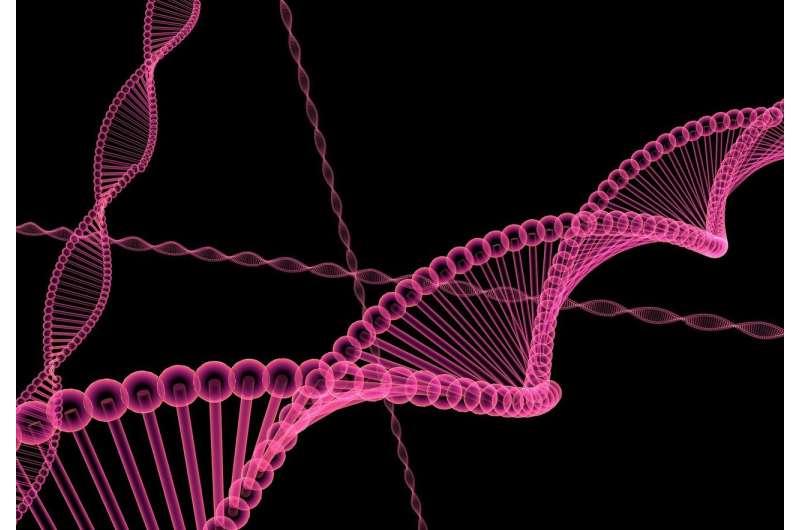This article has been reviewed according to Science X's editorial process and policies. Editors have highlighted the following attributes while ensuring the content's credibility:
fact-checked
peer-reviewed publication
trusted source
proofread
DNA construction leads to unexpected discovery of important cell function

Researchers at Karolinska Institutet in Sweden have used DNA origami, the art of folding DNA into desired structures, to show how an important cell receptor can be activated in a previously unknown way. The result opens new avenues for understanding how the Notch signaling pathway works and how it is involved in several serious diseases. The study is published in Nature Communications.
Notch is a cell receptor that is of great importance to a wide range of organisms and plays a crucial role in many different processes, including early embryonic development in both flies and humans. Notch regulates the development of stem cells into different cell types in the body. Defects in this signaling pathway can result in serious diseases, including cancer.
The prevailing view of the receptor's function has so far been that it is activated purely mechanically, by a neighboring cell pulling on it, meaning that signaling only occurs as a result of direct communication between cells.
However, researchers at Karolinska Institutet now report that the activation of Notch can also be achieved "on demand" with the help of a protein called Jag1. The researchers placed the protein on a DNA structure created by so-called DNA origami, a technique that makes it possible to build structures of any shape at the nanoscale using DNA as a building material. In this case, the DNA structure was molded into a nano-sized stick that can carry the protein to the cell surface.
"This is a technique that allows us to place molecules of the Jag1 protein at very small distances from each other in different patterns, and then we have exposed these patterns to stem cells with Notch receptors," says Björn Högberg, professor at the Department of Medical Biochemistry and Biophysics, Karolinska Institutet, who led the study together with KI researcher Ioanna Smyrlaki at the same department.
The results show that the Notch receptor can be activated to different degrees, depending on the shape of the pattern and the local concentration of the protein. However, several questions remain about how exactly this signaling takes place.
"We are now collaborating with other researchers to see if we can make this method work in vivo as well, i.e. in a mouse model and not just in test tubes," says Björn Högberg. "This is basic research, but Notch is an important component in several diseases, including a form of leukemia and the developmental disorder Alagille Syndrome. We therefore hope that the results will also lead to a better understanding of these diseases."
More information: Soluble and multivalent Jag1 DNA origami nanopatterns activate Notch without pulling force, Nature Communications (2024). DOI: 10.1038/s41467-023-44059-4
Journal information: Nature Communications
Provided by Karolinska Institutet




















